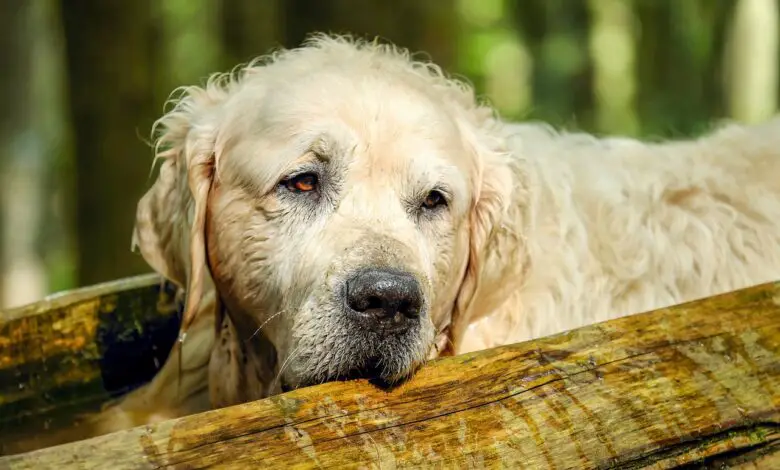The Definite Signs Your Dog Is Getting on in Years

Much like humans, dogs grow older over time. Unfortunately, dogs do so much quicker than humans, reaching senior age from as little as six years old for larger breeds. It’s always good to know when your furry best friend has reached the later stage of their life, as you can do your part to make life easier and more comfortable for them. Plus, it won’t be as much of a shock when they do pass away.
What Defines a Senior Dog?
Dogs reach senior age at different times depending on their breed. Small dogs such as Chihuahuas are considered senior between 7-10 years of age, medium dogs like Australian shepherds reach senior age at around 7 years old, and large/giant dogs like Great Danes reach senior age even younger at about 5-6 years old.
Of course, every dog is slightly different. That’s why it’s so important for all dog owners to understand what to look for regarding dog aging. Below, you can discover the signs your dog is getting on in years.
Slowing Down
It’s entirely normal for older dogs to not have as much energy as puppies or younger dogs. You might notice they don’t run as long as they used to while out on walks or that they get out of breath a little quicker. However, they should still enjoy some exercise and not struggle with daily tasks like climbing or descending stairs. If they can no longer do those activities, you should visit the vet, as it could be a joint issue. If that’s the case, a vet could prescribe various treatments, from surgery to pain management medications.
Gray Hair
Did you know that dogs can get gray hair, just like humans? It’s true! A sure sign that your dog is getting on in years is that he has gray fur. It’s an adorable trait and can even occur a couple of years before your dog reaches his senior age.
Loss of Fur
Much like in humans, a little hair loss (or fur) is absolutely normal as time goes on, as the hair follicles are no longer as youthful as they once were. That doesn’t mean a lot of fur loss should be ignored. A lot of hair loss in one area or from the entirety of your dog’s body could be a sign of an underlying disease, from hypothyroidism to dermatitis, so get that checked out.
Incontinence
You might be very displeased to realize your dog – who you had once trained – is no longer house-trained and pees or poops inside the home. Unfortunately, this happens due to common age-related diseases in dogs, such as canine kidney disease. You can go to your vet to get medications to clear up any infections and reduce incontinence.
A Change in Behavior
Watching your dog’s behavior change can be very worrisome and often happens when they are in their senior years. If you notice signs such as heightened anxiety, compulsive behaviors, changes to sleep, or a newfound fear (of an object or person), it’s essential to get them checked at the vet. Canine cognitive dysfunction syndrome could be the cause here and is a type of dementia specific to dogs.
For times like these, it’s always good to have dog insurance to cover the costs of unexpected illnesses in your dog. Getting a tailored dog insurance plan can mean you don’t end up out of pocket when paying for things like medications. Instead of worrying about finances, you can shower your pup with care and attention. Remember, it’s always best to see a vet when your dog shows any changes in behavior. The sooner you get medical care for your dog, the better.
Weight Changes
A weight change in your favorite buddy might be a sudden cause for concern, and it’s certainly something you should look into, especially if it happens suddenly. Generally, though, it’s pretty standard for older dogs to gain a few extra pounds over time due to the fact they’re not as active as they once were. In this case, consider adjusting your dog’s diet by reducing portion sizes slightly. If the weight change was extremely fast, see your vet, as that’s more of a cause for concern.
Dental Issues
Even if you kept on top of your dog’s dental hygiene throughout their life, you might still notice that they have dental troubles as they age. You might notice signs like very bad breath or your dog being unable to chew through toys like they used to. In this case, it’s a good idea to switch to softer toys and take your dog to the vet, as something like periodontal disease might be the problem here.
A Loss of Vision
Most people experience deteriorating vision as they get older, and the same can be said for dogs. There are several signs that your dog has vision problems – squinting, cloudiness in the eye, bulging, and being startled more easily. If you notice these signs, get your dog checked out by a vet, as it might be something treatable like cataracts.
When Is It Time to Say Goodbye?
Deciding that it’s time to say goodbye to your dog is never an easy decision. Your dog is part of the family, and the last thing you want is to never see its tail wag again. It might be the kindest decision for you to make, though, especially if your dog is in a lot of pain and discomfort. Signs that your dog is not coping well with discomfort include being more withdrawn, avoiding physical contact with you, and restlessness. It’s always a good idea to get your vet’s opinion about whether you can realistically help your dog live a longer life in comfort or if it’s time to say goodbye.
If it is time to say goodbye to your favorite canine friend, there are lots of ways to do it with the utmost respect. Choosing an excellent veterinary practice is a good idea, and being present during the process of euthanasia makes it easier for your dog. It’s a good idea to get your dog cremated afterward and keep the ashes so that you always have his or her memory with you.





